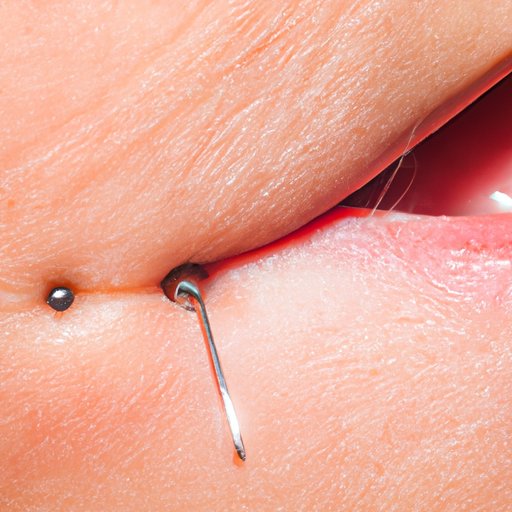
Introduction
Getting a new piercing can be a fun and exciting way to express yourself, but it’s important to take care of it properly to avoid complications. One common question that many people have is how long they should wait to swim after getting a piercing. In this comprehensive guide, we’ll explore the risks of swimming too soon, discuss the healing process, and offer advice on how to keep your piercing safe while enjoying the water.
The Healing Process: A Guide To Swimming After Piercing
Before we dive into the specifics of swimming with a new piercing, it’s important to understand how piercings heal. When you get a piercing, your body sends special cells to the area to help heal and protect it. During the healing process, it’s important to avoid exposing your piercing to anything that could cause infection or irritate the area, including chlorine and other chemicals found in swimming pools.
The length of time it takes for a piercing to heal can vary depending on the location of the piercing and your body’s natural healing process. In general, piercings can take anywhere from a few weeks to several months to fully heal.
When it comes to swimming after a piercing, it’s best to err on the side of caution. Swimming too soon after getting a piercing can increase the risk of infection and other complications, so it’s important to wait until your piercing is completely healed before you dive back in.
Dive In Too Soon? The Risks of Swimming After A Fresh Piercing
Swimming with a fresh piercing is never a good idea. Not only can it cause irritation, but it also puts you at a higher risk of infection. This is because swimming pools and other bodies of water can harbor all sorts of bacteria and other microorganisms that can be harmful to an open wound.
If you swim with a new piercing, you risk introducing these harmful microbes into your body. This can lead to infection, which can cause pain, redness, and even pus or discharge from the piercing site. In severe cases, infection can even lead to scarring or other long-term complications.
To avoid these risks, it’s important to follow proper aftercare procedures for your piercing and to never swim until your piercing is completely healed. This means waiting at least 4-6 weeks for earlobe piercings and 3-6 months for other types of piercings before you hit the water.
Making A Splash: The Best Time To Get Back In The Water After A Piercing
When it comes to swimming after a piercing, there’s no one-size-fits-all answer. The length of time you should wait will depend on a variety of factors, including the location of your piercing and how well it’s healing.
As a general rule, earlobe piercings typically need 4-6 weeks to heal, while other piercings, such as nose or navel piercings, can take 3-6 months or longer. If you’re unsure how long you should wait to swim after a specific type of piercing, consult with your piercer for personalized advice.
Even if you’ve waited the recommended amount of time, it’s still important to be cautious when swimming with a piercing. Start by testing the water with your hand to make sure it’s not too hot or too cold. Be sure to rinse off after swimming to remove any bacteria or chemicals that may have gotten on your piercing.
Pool Rules: What You Need to Know about Swimming and Piercings
If you’re planning to swim with a new piercing, it’s important to be aware of any special rules or regulations that may apply. For example, some public health codes require people with piercings to cover them with a waterproof bandage while swimming to prevent the spread of infection.
Additionally, many piercing professionals recommend avoiding certain types of swimming, such as hot tubs or natural bodies of water, for an extended period of time after getting a piercing. These environments are more likely to contain harmful bacteria or other microorganisms that can increase your risk of infection.
To ensure the safety and hygiene of your piercing while swimming, be sure to follow any guidelines provided by your piercer or public health officials. This may include using a waterproof bandage, avoiding certain types of water, or taking extra care to clean your piercing after swimming.
From Piercing To Poolside: A Complete Guide To Swimming Post-Piercing
Swimming can be a fun and enjoyable way to spend a summer day, but it’s important to prioritize your health and safety over the desire to swim with a new piercing. If you’ve recently been pierced, take the time to follow proper aftercare procedures and wait until your piercing is fully healed before you dive back into the pool.
If you’re unsure when it’s safe to swim after a piercing, consult with your piercer or a qualified medical professional for personalized advice. Remember to always err on the side of caution and take extra care to protect your piercing when enjoying the water.
Conclusion
In conclusion, knowing when it’s safe to swim after a piercing is an important part of proper aftercare. By following the guidelines provided by your piercer and waiting until your piercing is fully healed, you can ensure that you have a fun and safe summer while avoiding the risk of infection or other complications.
Remember to prioritize your health and safety over the desire to swim, and always consult a professional if you have any concerns or questions about caring for your piercing.




